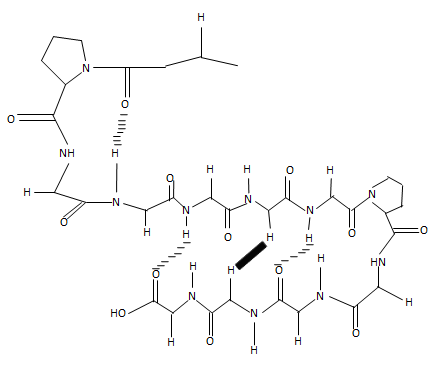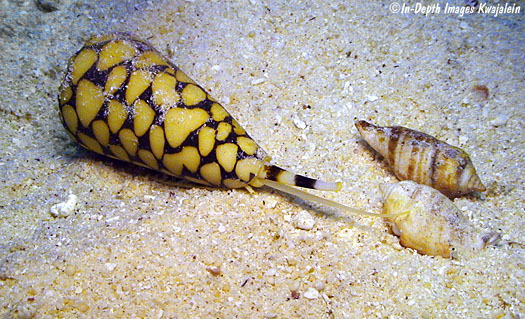Venom Facts
 Conus marmoreus is an unusual snail in more ways
than one. For starters, it is a carnivorous animal that
specifically hunts other molluscs.
Secondly, it utilizes a specialized
harpoon-shaped tooth to take down its prey. Thirdly,
it combines a deadly venom secreted through this tooth to
positively ensure that its prey cannot escape. This
technique of acquiring food distinguishes the genus Conus
from other classifications of snails. Once the prey has
been poisoned, its muscles relax, it becomes flaccid, and it is easy to remove from
its shell.
Conus marmoreus is an unusual snail in more ways
than one. For starters, it is a carnivorous animal that
specifically hunts other molluscs.
Secondly, it utilizes a specialized
harpoon-shaped tooth to take down its prey. Thirdly,
it combines a deadly venom secreted through this tooth to
positively ensure that its prey cannot escape. This
technique of acquiring food distinguishes the genus Conus
from other classifications of snails. Once the prey has
been poisoned, its muscles relax, it becomes flaccid, and it is easy to remove from
its shell.
There are approximately 500 known species in the genus Conus,
and each have their own
distinct venom. These toxins are aptly named conotoxins.
Conotoxins are small, structured peptide toxins. This
means they are bonded by peptide bonds, which are bonds between
the carboxylic end of one amino acid to the amine end of
another. These peptides work by targeting and blocking ion
channels of either the voltage-gated or ligand-gated class.
These ion channels are where action potentials in neurons are
created. Therefore, if no ions can get through to the
neuron, no action potentials can be made and sent to other
neurons, and the prey organism is paralyzed. It is most
likely that different Conus members target different
specific ion channels, depending on the animals they feed on.
 For
all of the nuances on exactly how these toxins
work, visit the
article referenced at the
American
Physiological Society webpage focused on the toxins of the
Conus genus.
For
all of the nuances on exactly how these toxins
work, visit the
article referenced at the
American
Physiological Society webpage focused on the toxins of the
Conus genus.
Continue to References
Return to Home
Visit MultipleOrganisms.net
Visit the UW-La
Crosse Website
Contact Information